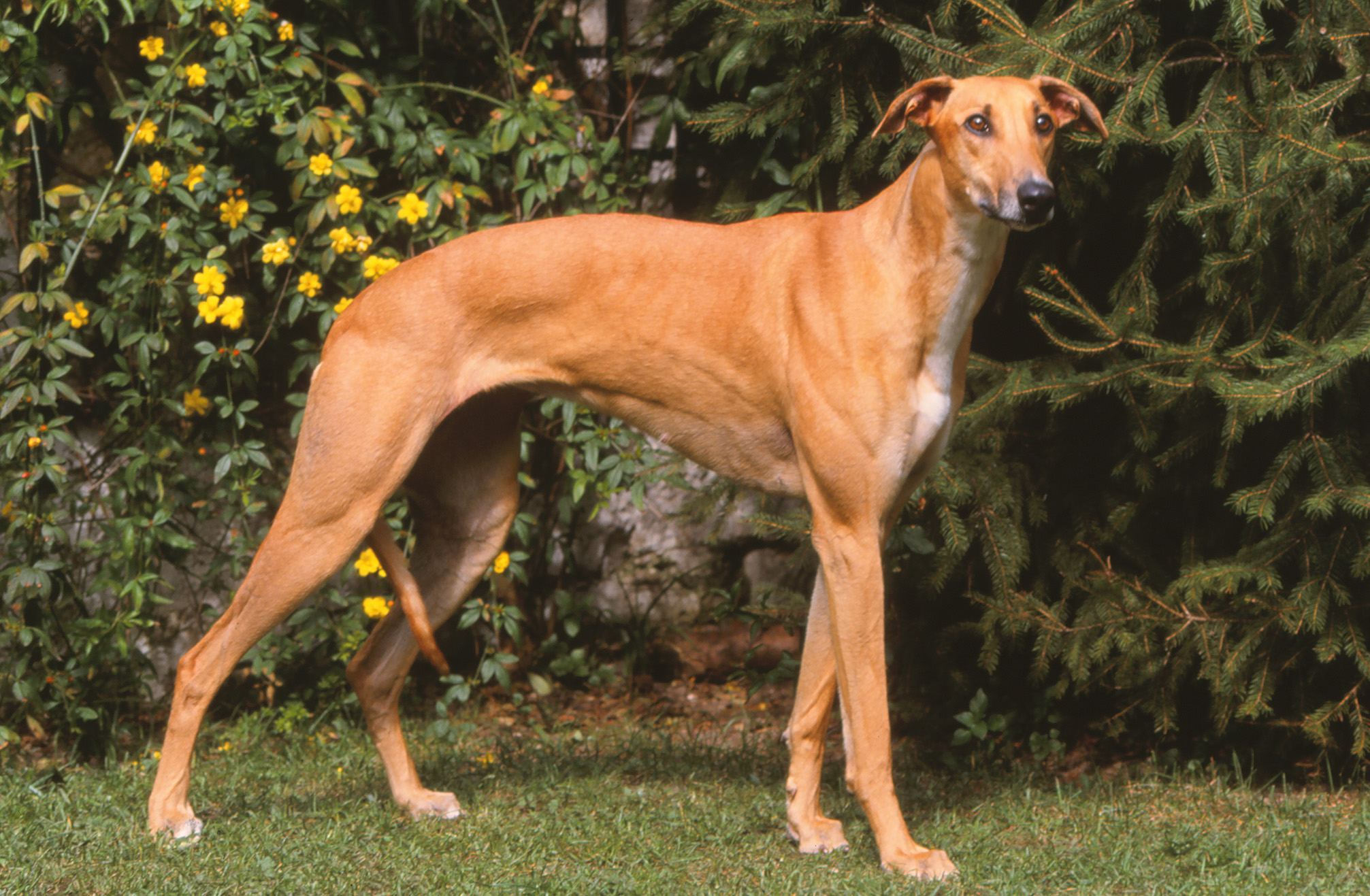Hungarian Greyhound

Description
The Hungarian Greyhound, also known as the Magyar Agár, is a sighthound breed that has been historically bred for hunting in Hungary. This breed is highly prized for its speed, endurance, and ability to track and catch game, particularly in the open plains of the Hungarian countryside. The Hungarian Greyhound is one of the oldest sighthound breeds in Europe, with a history that dates back over a thousand years. It is believed to have been brought to Hungary by the Magyars (the Hungarian people) during their migration into the Carpathian Basin. Over time, the breed developed as a versatile hunter, used primarily for chasing hares, rabbits, and other small to medium-sized game.
Physically, the Hungarian Greyhound is an elegant and athletic dog, built for speed and agility. It has a sleek, muscular body that is light yet powerful, allowing it to run at impressive speeds. The breed typically stands between 24 to 28 inches tall at the shoulder, with males being larger than females. The head is long and narrow, with almond-shaped eyes that give the dog a sharp and intelligent expression. The Hungarian Greyhound’s coat is short, smooth, and dense, providing minimal protection from the elements while still offering enough insulation to handle the cold winters of Hungary. The coat comes in a variety of colors, including fawn, brindle, and black, often with white markings on the chest or legs.
As a sighthound, the Hungarian Greyhound relies heavily on its keen eyesight to locate and chase prey. Its ability to spot movement from long distances and its incredible speed make it an excellent hunter, capable of chasing down fast-moving game. Historically, it was used both as a solitary hunter and in packs, depending on the quarry and terrain. The breed’s endurance allows it to maintain a high speed over long distances, which is a valuable trait for hunting in the vast, open landscapes of Hungary. While they were primarily used for hunting, Hungarian Greyhounds are also known for their gentle and calm nature, especially when they are at rest.
In terms of temperament, the Hungarian Greyhound is typically calm, gentle, and affectionate, making it an excellent companion for families and individuals alike. Though they are reserved and independent when hunting, they tend to be quite affectionate and loyal to their owners. They are generally good with children and other pets, though they retain a strong prey drive and may not be suitable for households with small animals like rabbits or guinea pigs. Despite their hunting instincts, Hungarian Greyhounds are not overly demanding in terms of exercise; a few good runs or walks to stretch their legs will suffice. However, they do enjoy the opportunity to run freely in open spaces, which helps them burn off energy and stay healthy.
Overall, the **Hungarian Greyhound** is a beautiful and versatile breed with a rich history rooted in hunting. Its combination of speed, intelligence, and calm demeanor makes it an excellent choice for those seeking a sighthound with both working ability and companionship qualities. Whether as a hunting partner or a family pet, the Magyar Agár stands out for its elegance, loyalty, and athleticism.
History
The Hungarian Greyhound, known as the *Magyar Agár*, is an ancient sighthound breed native to Hungary, with a history that dates back over a thousand years. It is believed to have been brought to the Carpathian Basin by the Magyar tribes during their migration from Central Asia in the 9th century. These dogs were prized for their speed, endurance, and keen eyesight, making them essential hunting companions for tracking and chasing game across Hungary's expansive plains. Unlike the English Greyhound, which is built for sprinting, the Hungarian Greyhound was developed for long-distance running, excelling in stamina over endurance hunts.
The Magyar Agár became an integral part of Hungarian hunting culture, used primarily for pursuing hare, deer, and even wolves. Its lean yet muscular build allowed it to cover vast areas of terrain with ease, and its thick, slightly coarse coat provided protection from the region’s harsh winters and rough vegetation. Over time, the breed was refined through selective breeding, occasionally crossed with other sighthounds to enhance specific traits. However, its core qualities of speed, resilience, and loyalty remained consistent.
By the 19th and early 20th centuries, the popularity of the Hungarian Greyhound declined as modern firearms and new hunting practices reduced the need for sighthounds. The two World Wars further impacted the breed's population, threatening its survival. Dedicated Hungarian breeders, however, worked to preserve the breed’s legacy, emphasizing its traditional roles and cultural importance. It gained recognition in its homeland and was later recognized by international kennel organizations, including the Fédération Cynologique Internationale (FCI).
Today, the Hungarian Greyhound remains relatively rare but is cherished by enthusiasts for its rich heritage and unique qualities. While it continues to be used for hunting in some regions, it has also found a role as a loyal and affectionate companion in active households. The Magyar Agár’s enduring legacy is a testament to its adaptability and the dedication of those who have worked to preserve this historic breed.
Colors
• Black
• Brindle
• Fawn
• Red


